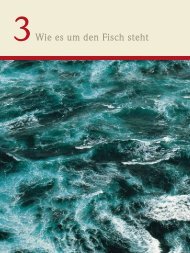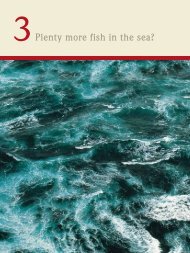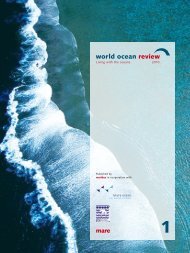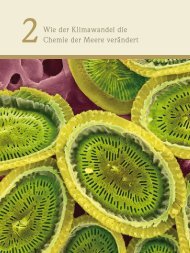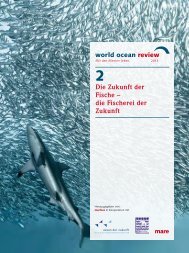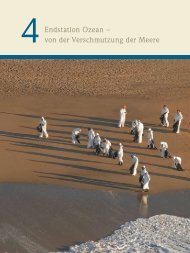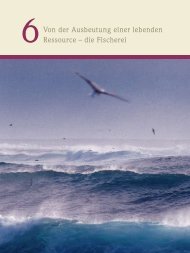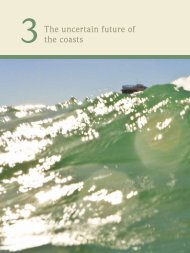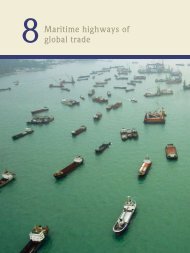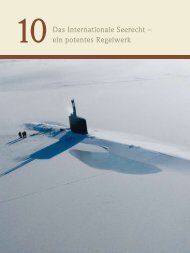Download WOR 2 PDF - World Ocean Review
Download WOR 2 PDF - World Ocean Review
Download WOR 2 PDF - World Ocean Review
Create successful ePaper yourself
Turn your PDF publications into a flip-book with our unique Google optimized e-Paper software.
80> chapter 04Aquaculture – protein provider for the world> During the 1970s aquaculture was a relatively insignificant industry, buttoday it is almost as productive as the ocean fishing sector. About 600 aquatic species are nowraised in captivity, with different species being preferred for different regions. Experts predict thatthe importance of fish farming will increase even more in the future, because it has clear advantagesover beef and pork production.4.1 > No other foodproduction sector hasachieved such highgrowth rates as aquaculturein the past40 years.Fish for 9 billion peopleThe global population is growing at a breathtaking pace. In1950 the world had a total of 2.5 billion people, a figurethat had burgeoned to 7 billion by 2012. According toUnited Nations estimates, this number could exceed the9 billion mark by mid-century. As populations increase, sotoo does the need for food. Fish is a widespread, affordableand healthy source of valuable protein. There is no question,therefore, that the global demand for fish will intensifyin future.When we consider that the amount of wild-capturedfish has not increased in recent years, only one alternativeremains: fish farming, or aquaculture, must fill the gap. IsAverage annual production increase (1970 to 2008)Plant Food CommoditiesCereals 2.1 %Pulses 1.1 %Roots and tubers 0.9 %Vegetables and melons 3.4 %Animal food commoditiesBeef and buffalo 1.3 %Eggs 3.2 %Milk 1.5 %Poultry 5.0 %Sheep and goats 1.8 %Fish 8.4 %it capable of doing so? This is the question many scientistsaround the world are trying to answer.For many years aquaculture played a relatively minorrole in global fish production, but its significance hasincreased dramatically over the past 20 years, spurred bythe demand from Asia’s fast-growing populations. Today,aquaculture makes a major contribution to human nutrition.For example, it provides a large proportion of the animalprotein consumed in China, Bangladesh and Indonesia.Global production of fish, mussels and crab in 2010was almost 60 million tonnes, a figure which includes productionin marine waters, brackish water and freshwater.Aquaculture production is now about three quarters ofthat from ocean fish and seafood caught in the wild. In2011 this amounted to 78.9 million tonnes.No other food industry has shown such growth asaquaculture in recent decades. Between 1970 and 2008annual production worldwide increased by an average of8.4 per cent; much more than poultry farming and eggproduction, which have the second highest growth ratesafter aquaculture.Asia – the cradle of fish farmingAquaculture is not equally important in all countries andall regions. For instance, central Europe in general prefersits fish to be caught in the wild. In China on the otherhand, fish farming is widespread and has enjoyed a millennialong tradition, since carp were first domesticated.China is still the undisputed leader in aquaculture production.Since 1970 it has recorded annual growth rates inaquaculture production of an average 10 per cent, althoughrecently these have slowed to about 6 per cent. Today61 per cent of global production comes from China, with



